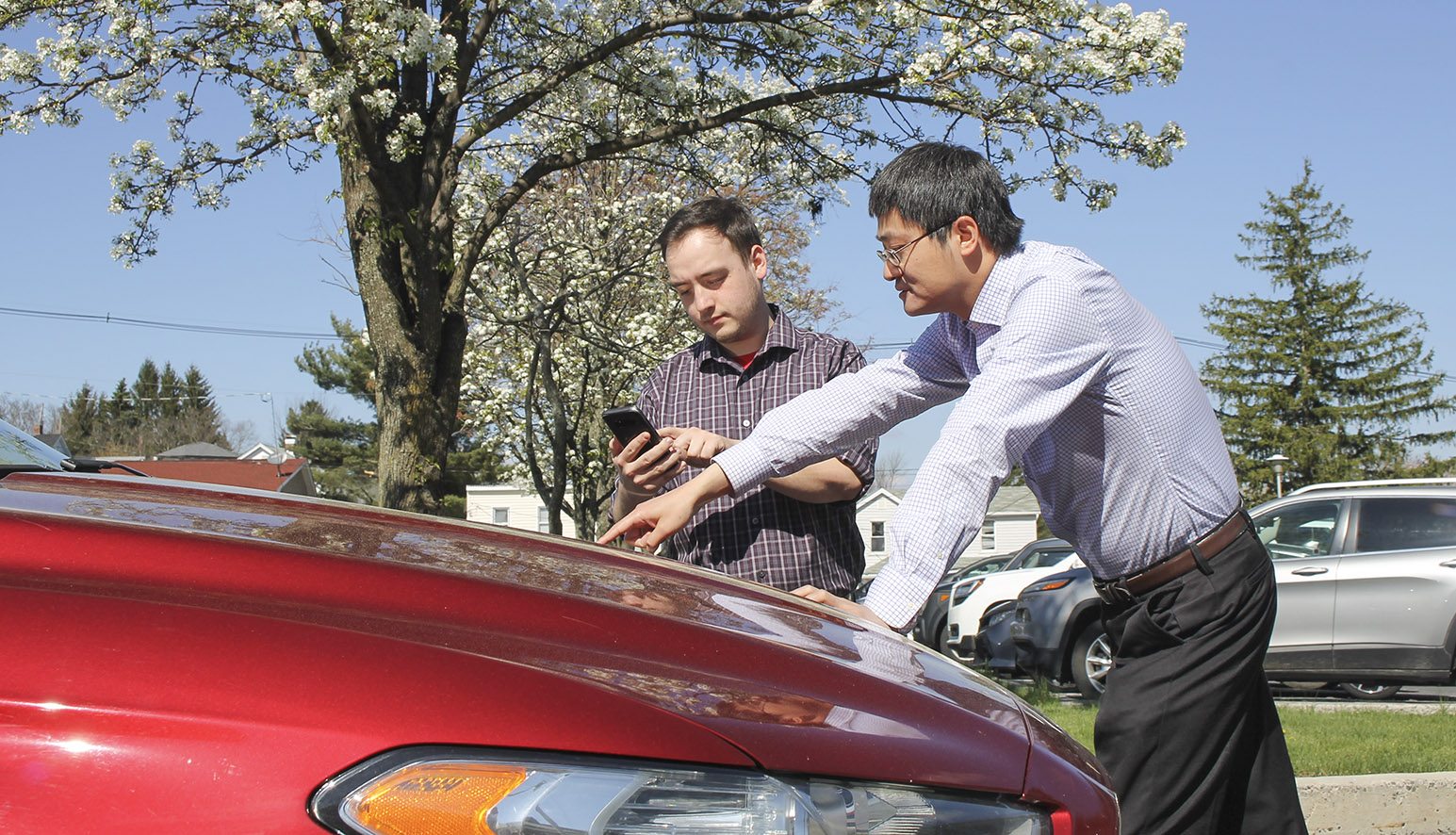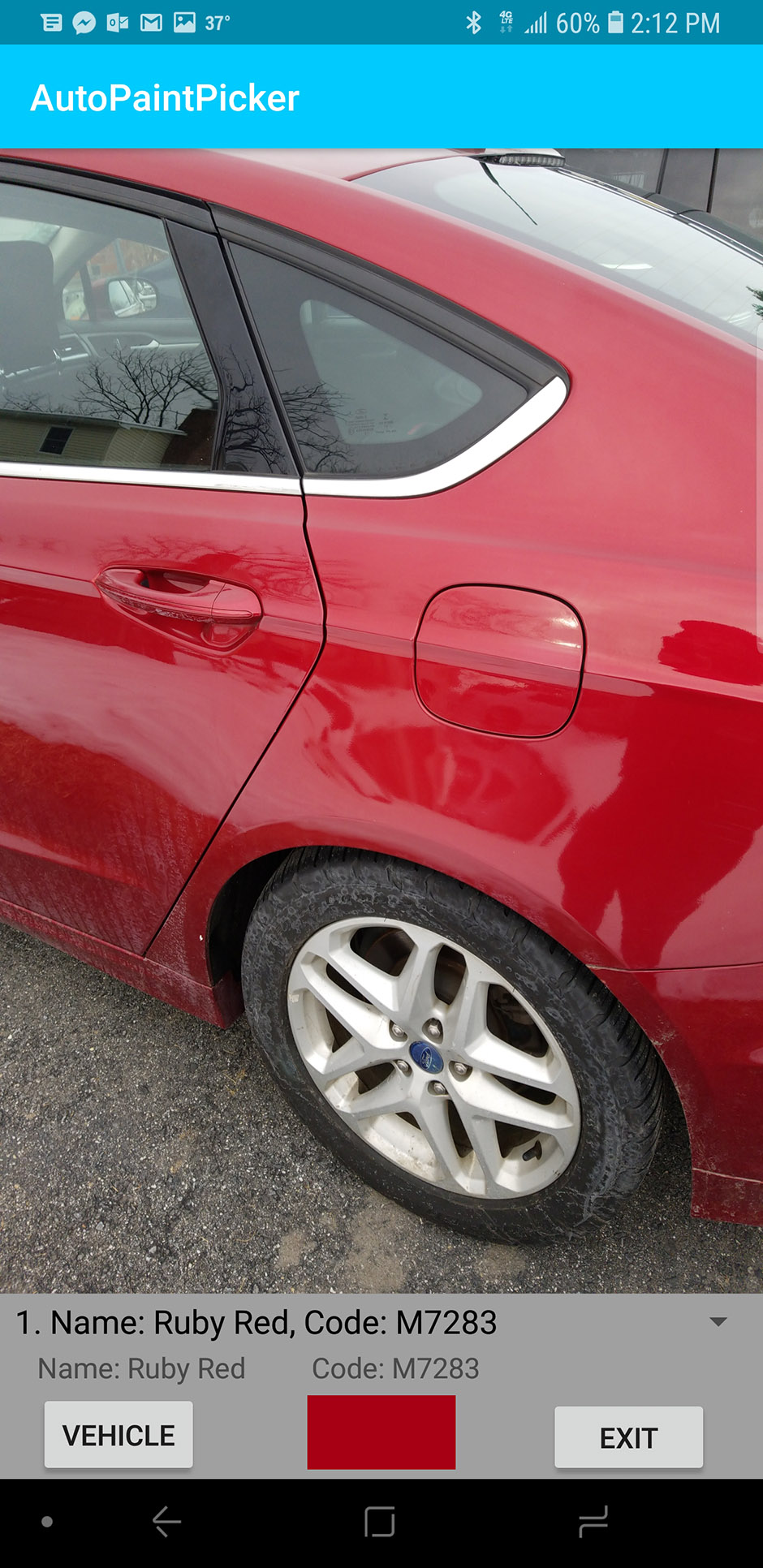Demystifying Paint Color With the Tap of an App
Sep 30, 2019 1:15 PM
By Rober Spahr ’13
Dr. Xunyu Pan and his student, Johnathan Tripp ’18/M’19, caught the attention of some tech industry giants this year with a new research paper they co-authored: “Paint Code Identification Using Mobile Color Detector,” based on an app that Tripp developed in Pan’s Multimedia and Internet Communications course.
Pan, an associate professor of computer science and information technology at FSU, presented that research in San Francisco at the Society for Imaging Science and Technology’s 2019 International Symposium on Electronic Imaging Science and Technology. The paper described the development of an application that identifies automobiles’ paint codes through the mobile device’s camera.
Representatives from one of the biggest names in tech quickly realized the app’s potential to help with an even more complex challenge: autonomous driving.
“Color is a very important factor for vehicle detection with autonomous driving,” said Pan. “This could be one feature feeding their neural network for machine learning to help detect vehicles. That actually has a lot of potential!”
Tripp first envisioned a mobile app that would look at painted surfaces and return product information about the paint. Given their limited time and nearly limitless number of paint colors, Pan suggested a narrower, practical goal: identifying automotive paint codes.
“Within any manufacturer’s vehicle, they have paint code identifiers for their specific paint,” Tripp said. “The typical consumer isn’t aware of what those codes are, so when they want to purchase touchup paint or repaint their vehicle, they won’t know what the specific code is. The purpose of this app was to make that process easier.”
Even that narrower goal presented challenges. Objectively measuring color is tricky. Color, after all, is the human perception of light wavelengths that a surface reflects. A color’s perceived appearance varies based on the source of light. With Pan’s guidance, Tripp developed a method to detect color codes even under varying lighting conditions.
The users enter a vehicle’s year, make and model, which limits the available color codes. They next take a picture of their vehicle and tap the screen to tell the app which color to match. The app samples the image, converts it to hexadecimal color strings and averages the color data from the selected region, producing an estimated color. It ranks that estimate against the possible paint codes, listing them in order of closest match. Users can visually confirm the match’s accuracy.
The project was a serious learning experience for Tripp, who encouraged other students to seek out opportunities to put their classroom lessons to work in practical ways.
“As they are learning things, they are applying it to something concrete. They figure out how to apply these skills as they go, instead of being pushed into the job market and having to figure it out,” he said. “I had to learn things that I hadn’t been exposed to. … It really pushed me to dive deeper and get a better understanding.”
Tripp’s research and design experience have already helped him land a software engineering position with a major retailer.
“This is certainly a project I highlighted on my resume,” Tripp said. “Companies that I talked to were very interested in it because it tackles a problem that requires some innovative thinking and research, and it actually has a meaningful impact.”
Pan said that feedback on the paper will help future students refine and improve the project, providing more learning experiences as Tripp’s successors further automate the app, expand its paint code database into the cloud and add paint codes from other industries.
“This entire process helps students learn how we do research, where we start, how we improve, turn in research and present it to the outside world,” said Pan. “This, I think, is a very good experiential learning process for students, and Johnathan is an excellent example!”
Pan and Tripp’s project was supported in part by an FSU Foundation Opportunity Grant, which supports innovative and unique student, faculty and staff projects.


